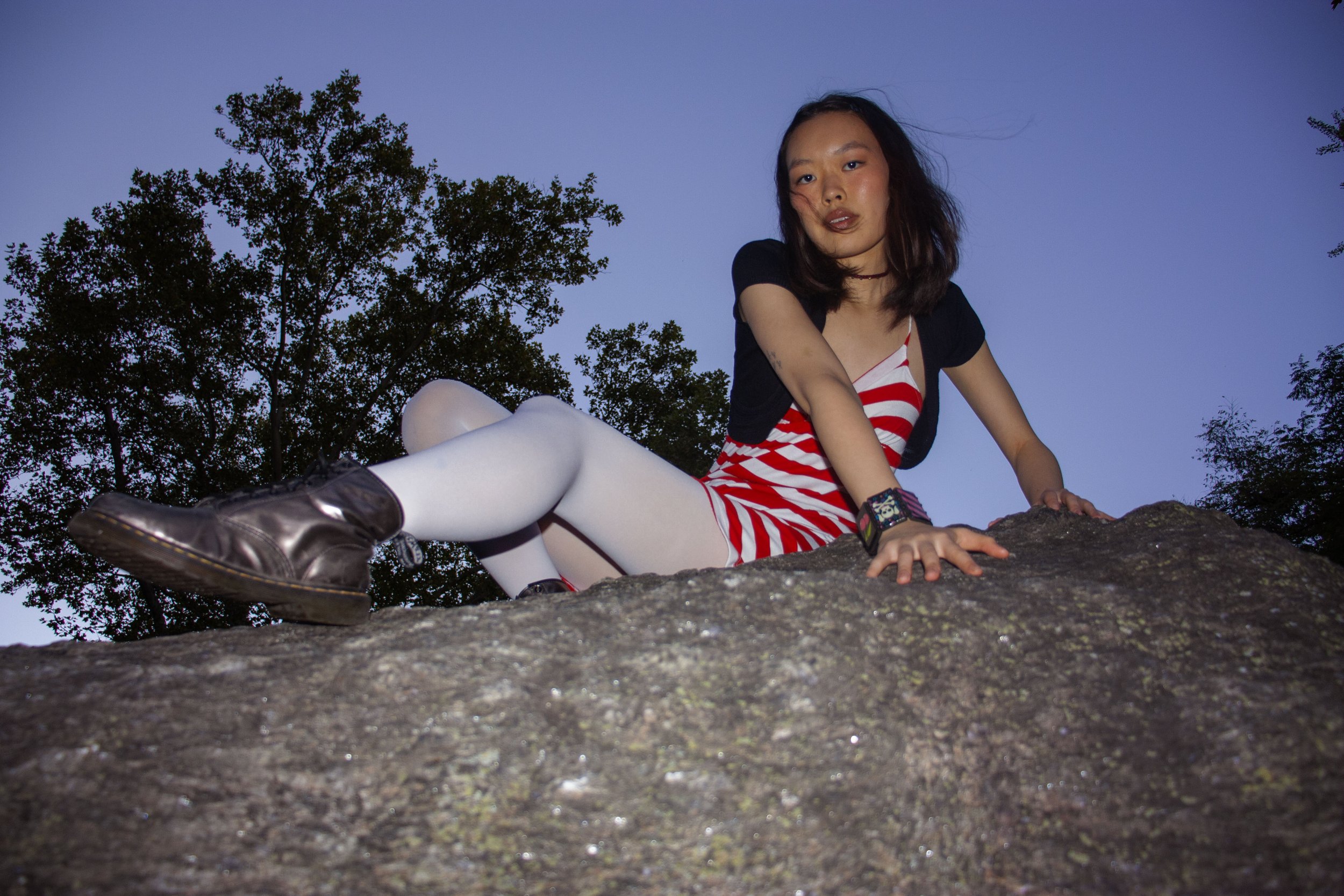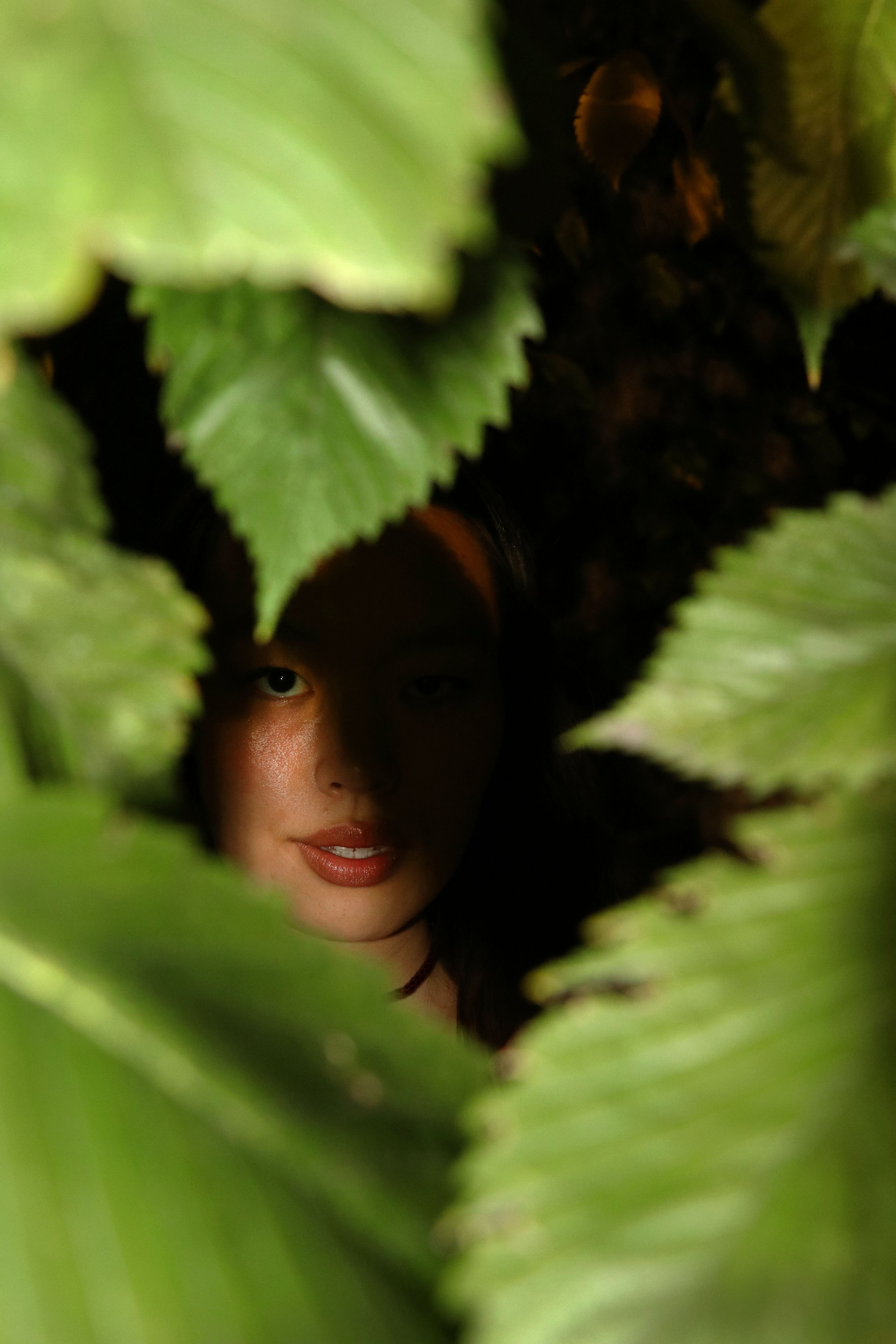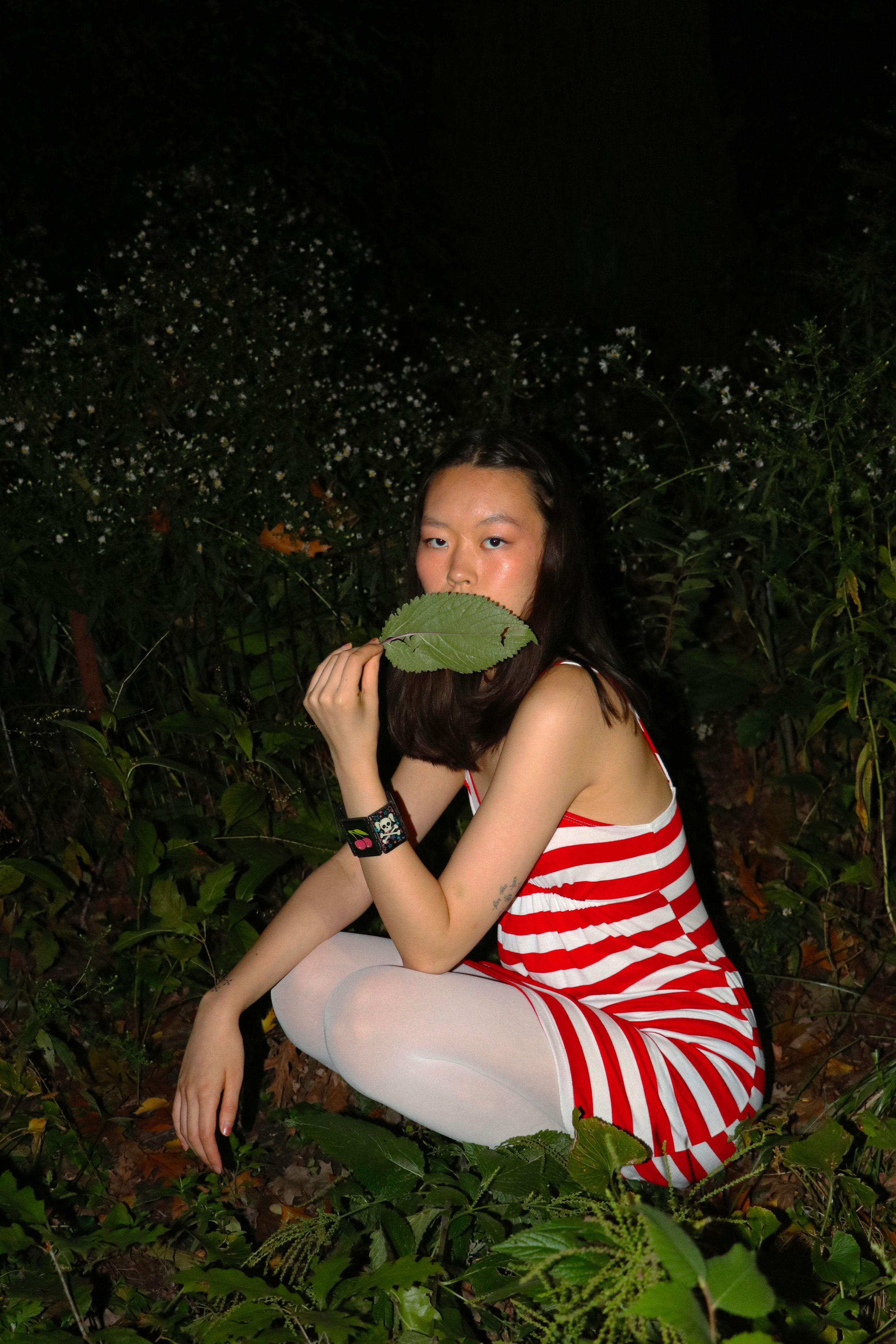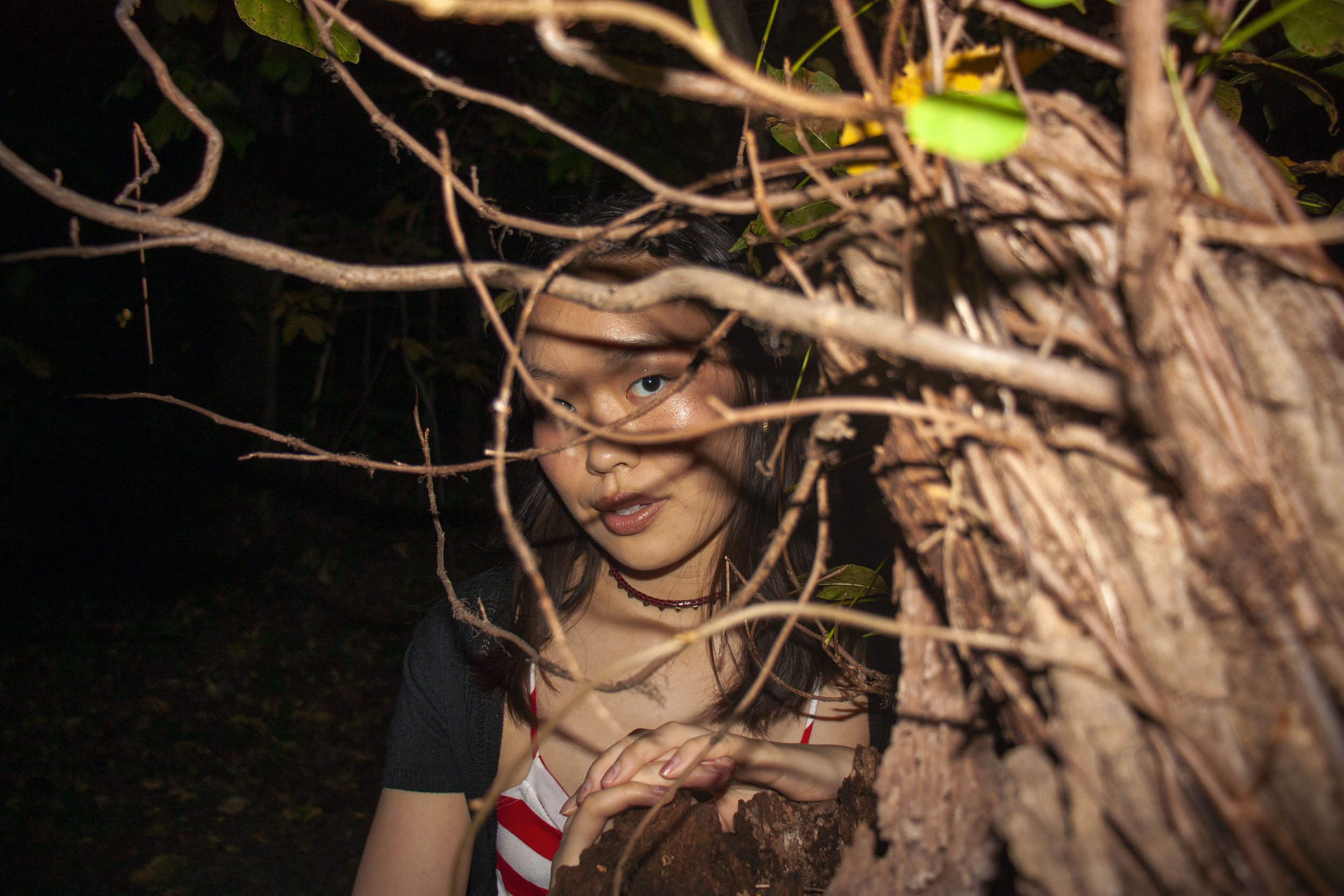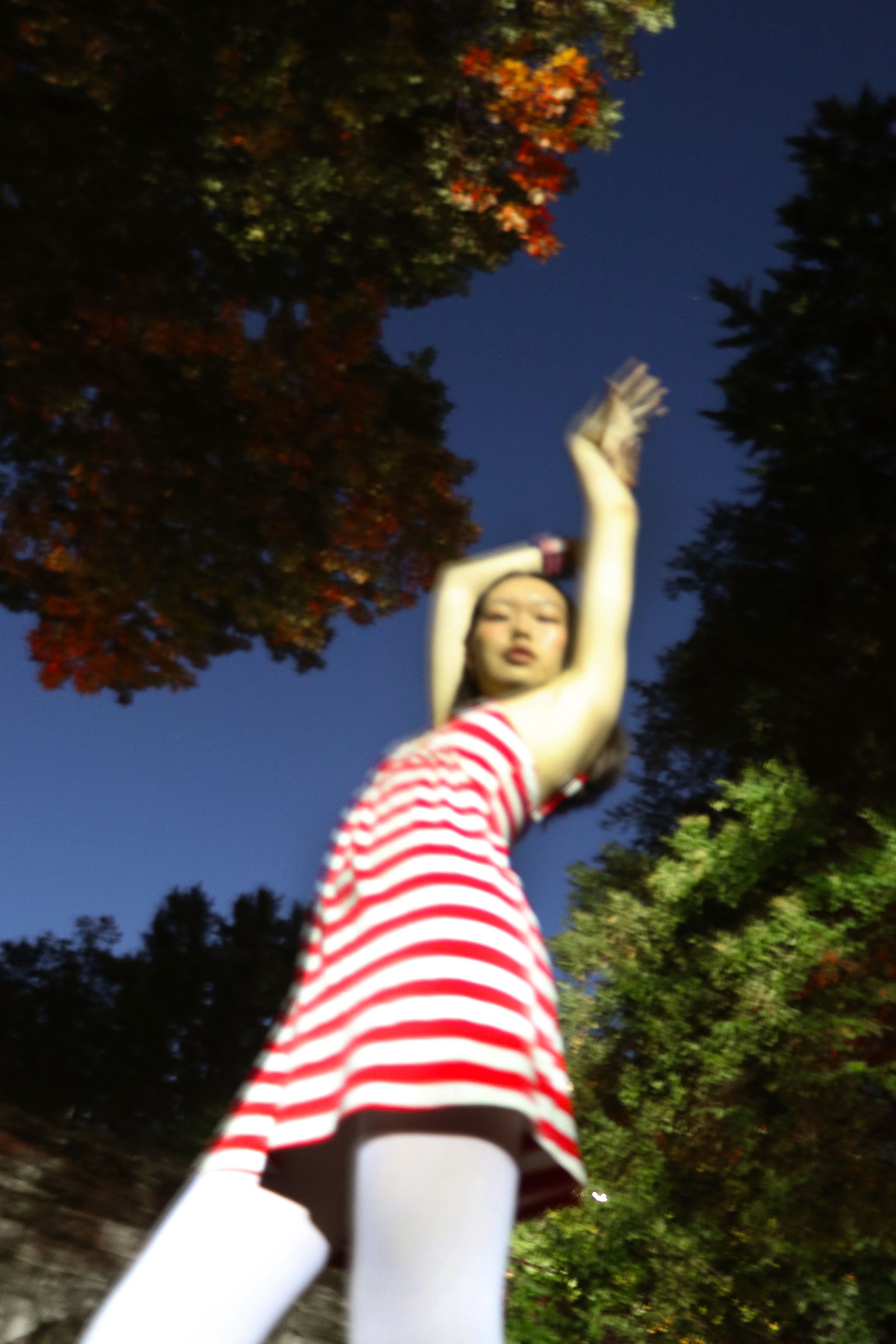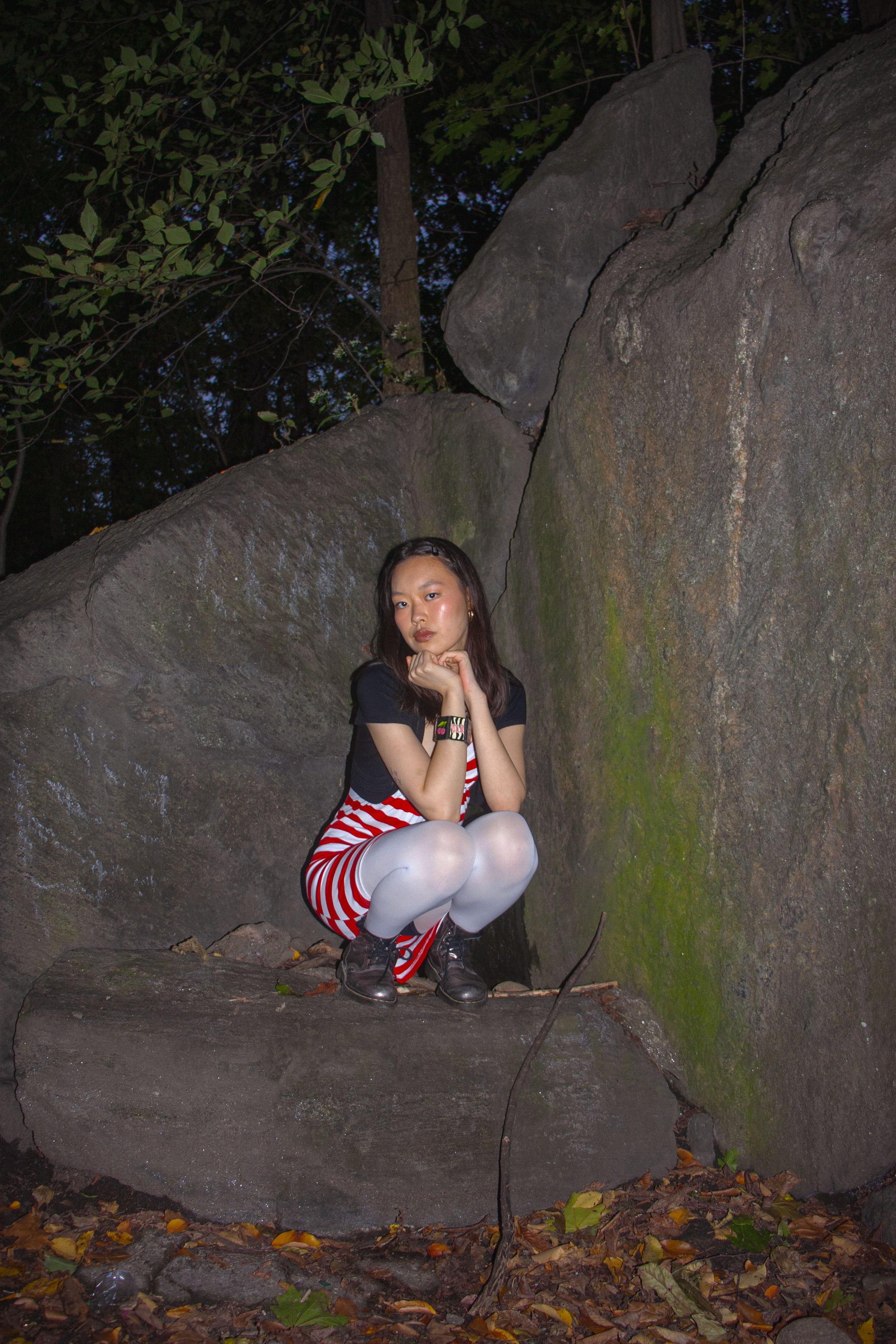Feature by Claire Killian
Photos by Frances Cohen, Will Park
Ashley Jiao is a senior in Columbia College, studying visual arts and statistics. She reflects on the importance of process in her art making and how she has gotten to a place of growth and comfort in her artistic practice.
Who inspired you or encouraged you to pursue art?
In terms of artistic influences, I definitely have many that I've found through Instagram. I constantly look at new images every day, and artists that I follow on Instagram are definitely most of where I get that. I really like just looking at my wall which has art by Rae Klein. I've discovered this painter named Sarah Fripon, whose work I feel really connects with what I'm interested in right now.
I also enjoy going to galleries seeing what the contemporary art scene is like. I'm definitely more inspired by contemporary artists rather than historical artists in museums because I'm interested in knowing what's going on right now.
I'm also inspired by books and poetry. I think I get a lot of the ideas from images and phrases that stick out to me, that create a vivid image in my mind. For example, one of the books that I recently read that really influenced me is Dogs of Summer by Andrea Abreu. It talks not only about the sticky, disgusting side of adolescence and girlhood but a toxic adolescent relationship. The imagery mentioned in the book is really beautiful and striking to me as well. It made me think about animals and dirt and grime. Also religion and purity—a lot of different concepts.
When I'm working I need to listen to music, especially playful and upbeat music. I also like when music is bad enough that it's good. It inspires me to be more playful and loose with my paintings.
I would also say fashion and other forms of self expression also play into my work, especially with the color schemes that I'm into. I've noticed that I've recently been gravitating towards purples, grays, reds, pinks and blues, which correspond with the colors I like to dress in.
Additionally, accessories and small trinkets inspire me. Because one thing I'm playing with now is scale, and I like to scale in on the small objects. I’m also toying with the concept of making decorative paintings that incorporate accessories in them.
You talked about your literary influences dealing with the stickiness of living and not shying away from the grossness and vulgarity of life, but then your musical influences are happy and playful. How do you reconcile these two things?
In a way my paintings are trying to find spaces with comfort, a happy mania within the grossness of everything. They might be two different sides of the same weirdness.
When someone, whether it's in a classroom or gallery, interacts with your painting, is there any particular thing that you want them to think about?
I feel like when I'm making my art, I don't really think too much about what other people might think of it. How they react is something I can't control; I'm just trying to externalize or give form to the ideas in my own head. And in that way, it sometimes feels very isolated—in a good way. I hope my art can bring the viewer comfort or some sort of resonance.
But that's not something I can guarantee, obviously. That's not something I'm super worried about anymore. So I would say, in my paintings, I like to focus more on the form than content. For example, I don't start with an idea or a concept that I wanted to put on a painting, I don't want to be like, “oh, I'm gonna have a person here. and they're gonna be doing this.” The ideas start with a form in my head. I'll think of an image, and then I think about how I can display this image in a way that is interesting compositionally. And then I go from there, because the paintings are not making these big statements about any sort of content in particular.
I read this piece by Susan Sontag about how assigning meanings to paintings is reductive, that explaining paintings alters the original intent of the artist. I resonate with that because even if I'm painting something about, let’s say, a plate of gummy candy, I don't really feel like that's what it's about. It's more so the image itself that really sticks in my mind and evokes a sensory reaction for me, rather than having to explain the ethics of gummy candy.
Overall, I'm just making art as a form of self expression for myself, mostly just because it feels like very necessary to me to give permanence to the ideas in my head. I'm not as worried about how other people process my art, but it's really nice when people enjoy it and we have have sort of a shared language to talk about the art.
Can you describe what your creative process is like?
It's changed over the years, but recently, I've been drawing from phrases that stick out to me. It doesn't even have to be from anything specific, or from my imagination. An image will come into my head, and I think about how I can make this image even more interesting. I write it down in my sketchbook. If I feel like it's compelling, and it's something I keep thinking about, I might put in the steps to make it into painting. I'll make a sketch, see what's the best composition. I figure out how big I want the painting to be, then stretch my canvas. Afterwards, I will make an underpainting, and then keep working from there.
I'm a pretty slow painter, and I'm also used to working very methodically. I like lists and step by step processes that keep me on track, because I feel like my mind is very meandering. If I don't make lists, nothing's gonna get done.
How do you decide what sort of medium you want to use in a work?
I've moved into ceramics and sculpture more recently, but I’ve always been drawn to the tactility of three-dimensional objects; a lot of my work deals with, and appeals to, the senses, in a very childlike way. I like a nice three-dimensional surface that I can touch or something very tactile in the world.
In the past, my three-dimensional work has been a little more conceptual. With my paintings, I start with an image in my head, and I know I want that image down, but with my ceramics and sculpture, I might be like, “oh, I want to explore modularity, or I want to explore something else.” For example, I made a house before that was out of ceramic. I was thinking about family history, the remembrance and forgetting of family history, and my childhood and adolescence.
A lot of the time, my paintings and my three-dimensional work pair together; usually the same things inspire them. In general, it depends on if I think the three-dimensional spatial element will contribute to the work at all. But I really enjoy all these mediums.
How did you first get involved in art?
I doodled for fun in school. I was obsessed with dogs; that was my thing. I would also doodle a cartoon duck on all my homework. I distinctly remember sixth grade: I was doing poorly in my art classes. I don't know why, but I find that funny now. I don't come from a family of artists or anything. However, my mom started sending me to an art studio where I learned traditional painting and the basics of oil painting which set a great foundation for my later work. I did art throughout high school, taking art classes and AP Art.
Then for a while in college I felt like I moved away from art a little bit. I had not found the subjects that I was interested in; I knew how to paint realistically, but there wasn't one thing that was compelling. I wasn't compelled to make images in the same way that I am now, playing with composition and all these formal elements of the painting. Thankfully, I really found, or I have started to find, myself as an artist and the themes and the visual language that I want to work with. I feel like once you have a visual language that you want to work with, or you know resonates with you, it's a lot easier to generate images from there.
I feel like I'm thinking about images all the time now.
What is the most challenging thing about making art?
Recently, it's just been the slow pace that I work at. I'm just a pretty slow person in general. I think with the pace of life that we're used to in society, art making doesn't necessarily fit in.
I read this piece by Jeanette Winterson, and it was about art making and how when you make art as a job or to produce for a gallery, for any deadline, or for other people in general, it sets you at this pace that isn't natural for art making, because art making comes in waves. It's very natural to have to take breaks, to work at your own pace.
I feel like because I tend to work at a slow pace, it doesn't always correlate with the pace that I'm expecting myself to be able to achieve, not because of outside influences, but just internally. Being patient with myself and getting comfortable with my own pace and being okay with having certain ideas and catching my work up to these ideas is something that's been challenging for me.
Can you describe the headspace you are in when making art?
Art for me, even though I work in lists and steps, is still so, so emotional for me. Honestly, in the past, every time I've talked about my paintings, I've cried because it's so deeply emotional to me; it’s a place that feels rooted in spirituality, and the metaphysical aspects of making a painting.
My mom is a big influence, not only in my art, but also in my life. I've always kind of been told that there was a higher power, or something above us to believe in. When I’m painting, I'm in a spiritual, metaphysical realm. I view crying, and being emotional, as part of this.
Art is deeply personal to me. It makes me feel like I am part of something, part of my highest self, maybe. It just feels right and necessary for me to be making images and painting.
What’s next for you and your art?
I don't have anything planned right now, not for a show or anything like that. I'm really focused on making a new body of work right now. I've been working with gummy candies and making a series of paintings and some sculptures.
I would say my work in the past was more figurative, representing the human figure itself, but I'm looking to move away from that.
The gallery space is so saturated with figurative work. It's just really exciting to take a break from that. Although I'm not completely shying away from it. I'm just finding myself more attracted to depicting objects and animals, and seeing what reactions those things can evoke.
I'm really interested in iconography in the same way, for example, I think I'm really inspired by young, queer, tattoo artists on Instagram, and all the meanings that can be captured in a symbol. How we assign meaning to these symbols, and also how iconography can play into belief systems and religion and our associations with the world.
My work recently has been me thinking about how we form labels and systems of meaning in the world and how we might be able to deconstruct this in a very adolescent way, where you're still in this very open, absorbing information phase, not making assumptions about anyone or anything.
I've also been interested in scale and composition recently. Depicting small things really big, or having the subject take up the entire canvas, or an interesting section of the canvas is something that I play with.
Also sensitivity to sensory stimuli. Which is something that maybe ties into adolescence too, because I think that part of being a child is liking to play with things and looking for gummy candy.
And okay, maybe this is embarrassing, but I've been really into slime videos and ASMR. Overall, I think I'm just very attuned to my senses right now, so maybe that's coming out in the work a little bit.
It's taken a while for me to find myself as an artist, or at least get to the stage where I feel such a pronounced love for this process of thinking of and creating images. If I could talk to myself a year ago, I would just basically say, “be patient with yourself,” in terms of finding a visual language.
Feeling inspired all the time is definitely not something that always happens, but it does come through making and creating more, learning from other artists, consuming as many images as you can and just noticing what interests you in the world—it doesn't have to be anything big.
I feel like making art is very affirming to me. It feels necessary for how my brain works, because a lot of the time I feel like my self expression is blocked through verbal expression. This is the truest way for me to express my deepest self to other people—the permanence of paintings and art acts as a documentation for me because I am a very forgetful person. It is nice to have a record of what I was interested in at that time and be able to visually map my change and growth.
Art for me is just so sacred and unexplainable.
You can find more of Ashley’s work on instagram @leg____pageant































